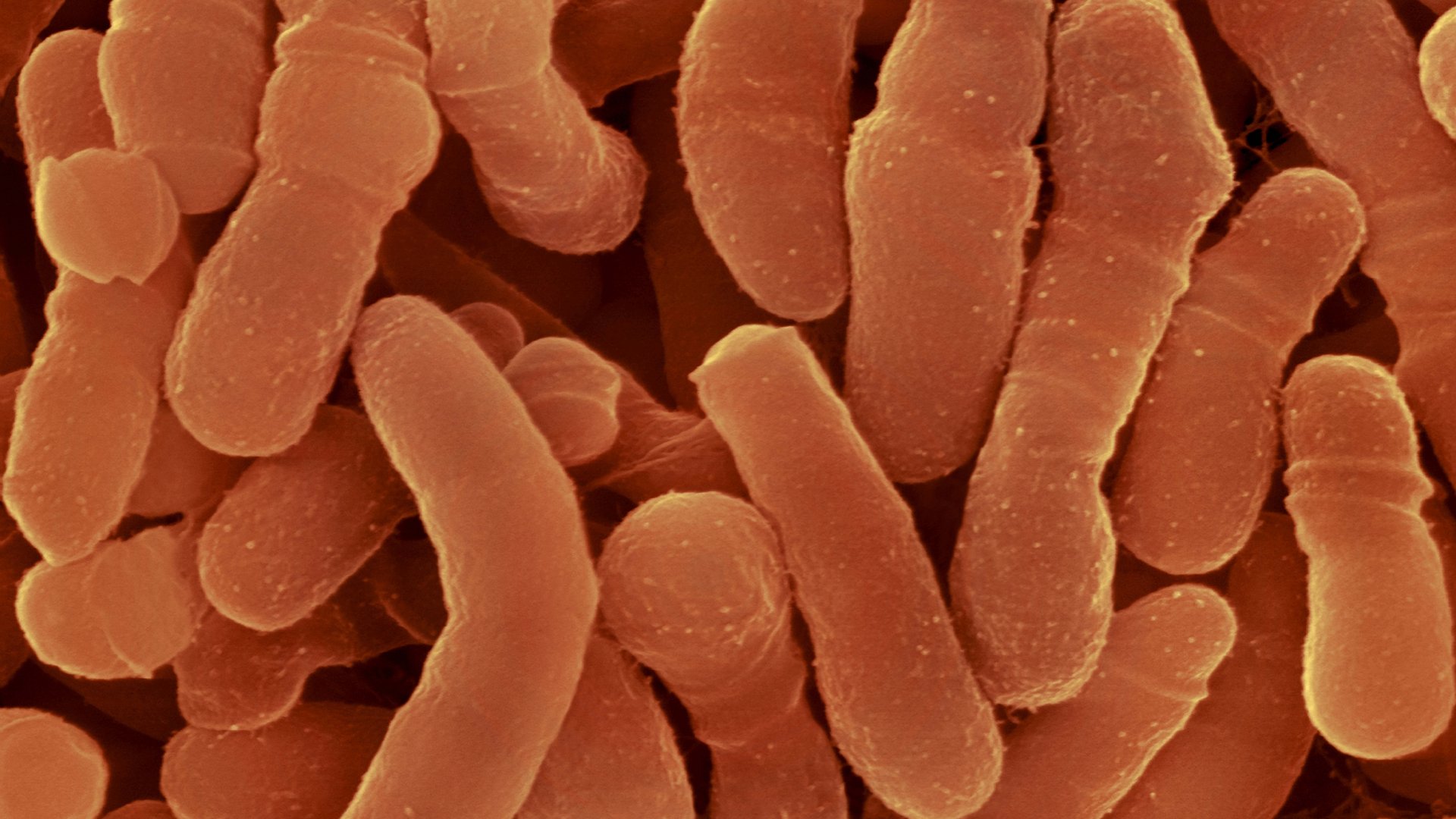Bacteria are found almost everywhere. You have more than 100,000 billion on your body alone. The number of species of bacteria on earth is the subject of discussion. Rough estimates point to tens of millions of species.
Bacteria are found almost everywhere. You have more than 100,000 billion on your body alone. The number of species of bacteria on earth is the subject of discussion. Rough estimates point to tens of millions of species.
First seen in the Netherlands
A bacterium is a unicellular micro-organism with no cell nucleus (prokaryote). Bacteria cannot be seen with the naked eye. Dutchman Antoni van Leeuwenhoek was the first person to observe bacteria using home-made microscopes in the 17th century.
Life with no nucleus
Bacteria are living beings. This means that, among other things, they move, eat, grow, reproduce and discharge waste matter. They belong to the prokaryotes (from the Greek ‘pro’ meaning ‘before’ and ‘karyon’, ‘kernel’). This means that they have no cell nuclei. They do have cell walls. Humans belong to the eukaryotes (from the Greek ‘eu’ meaning ‘true’). Our cells do have cell nuclei but no cell walls.
500 in a hair’s breadth
Bacteria have three main types of structure: spherical, rod-like and spiral. Their sizes differ enormously. The smallest bacteria are about 0.1 micrometre (μm) long, 500 times smaller than the thickness of a human hair. On the other hand, sulphur-eating giant bacteria can be 750 μm (0.75mm) long.
Ultimate recyclers
Despite their bad image, most bacteria are not harmful to people’s health. Many kinds of bacteria actually do very helpful work, for example in the human intestine, in the production and development of medicine, and by breaking down organic material in nature. Bacteria are the ultimate recyclers, a necessary link in the chain, taking the building bricks of life from dead plants and animals and making them available again for other species in the chain.

